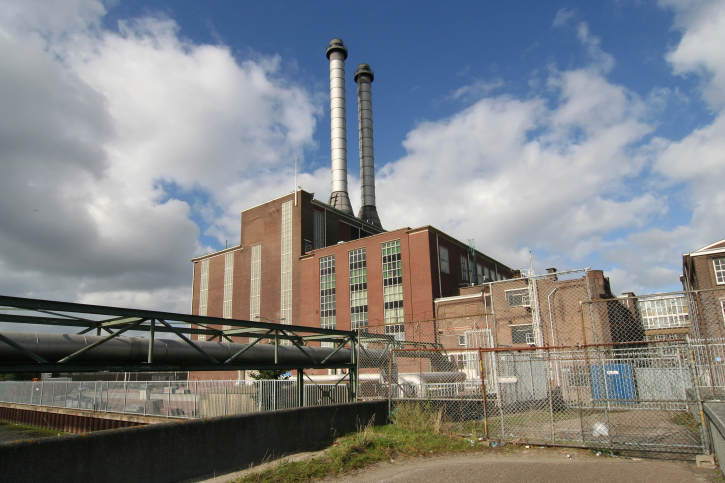A U.S. Government Accountability Office (GAO) review of federal spending on Carbon Capture and Storage (CCS) technology, once heralded as an effective way to reduce the threat of supposed manmade climate change, says the federal dollars have been misspent.
The federal government has spent more than $1 billion dollars attempting to bring commercially viable CCS technologies to the market, in particular attempting to capture and store carbon dioxide emissions from coal fueled power plants
Report Details Limited Success
A December 20, 2021, GAO report, “Carbon Capture and Storage: Actions Needed to Improve DOE Management of Demonstration Projects,” says since 2009, the U.S. Department of Energy has spent $1.1 billion on 11 projects to show how carbon dioxide emissions from coal-fueled power plants and industrial facilities could be captured and stored.
Yet for all the money spent over the past 12 years, the GAO concluded the results were meager.
“DOE provided nearly $684 million for eight coal projects, resulting in one operational facility,” says the GAO report. “Three projects were withdrawn – two prior to receiving funding – and one was built and entered operations, but halted operations in 2020 due to changing economic conditions.
“DOE terminated funding agreements for the other four projects prior to construction,” the GAO report continued. “Project documentation indicated and DOE officials and project representatives told GAO that economic factors – including decreased natural gas prices and uncertainty regarding carbon markets – negatively affected the economic viability of coal power plants and thus these projects.”
When CCS technologies were incorporated into the operations of industrial facilities, such as those that make ammonia used in fertilizer, the results were only slightly better.
“DOE provided approximately $438 million to three projects designed to capture and store carbon [dioxide] from industrial facilities, two of which were constructed and entered operations,” the GAO wrote. “The third project was withdrawn when the facility onto which the facility was to be incorporated was cancelled.”
DOE Management Problems
According to the GAO, market factors and an uncertain regulatory environment made private investors hesitant to partner with the DOE on CCS projects, particularly coal fueled power plants.
In addition, the GAO found the DOE badly managed the program, by failing to exercise proper oversight and cost controls.
“DOE, at the direction of senior leadership, did not adhere to cost controls designed to limit its financial exposure on funding agreements for coal projects that DOE ultimately terminated,” says GAO’s report. “As a result, the agency spent nearly $472 million on the definition and design of four unbuilt facilities – almost $300 million more than was planned for those project phases.”
Given the unsatisfactory record of DOE-managed CCS projects, GAO made two specific recommendations: “(1) improve its selection and negotiating processes and (2) more consistently administer projects against established scopes, schedules, and budgets.”
The complex systems needed for CCS to function properly and the cost it adds to facilities results in the power produced not being economically competitive, says David Wojick, Ph.D., a Virginia-based energy analyst.
“CCS is incredibly difficult from an engineering point of view, especially for coal plants, where you are trying to get small amounts of CO2 out of huge flows of super-hot exhaust gases,” said Wojick. “DOE is spending hundreds of millions on engineering and finally says it is not feasible.
“The line ‘changed economic conditions’ is code for it was marginal to begin with,” Wojick said. “Most of the infrastructure billions recently appropriated will go down the same rabbit hole.”
More CCS Spending Planned
The failure of CCS projects to deliver on their promise hasn’t dampened enthusiasm for the idea on Capitol Hill or the Biden White House.
Last year’s bipartisan infrastructure bill contained an additional $2.5 billion to be spent on CCS demonstration projects. The bill also included another $6 billion in spending on in large-scale CCS projects and pipelines to transport carbon dioxide to storage sites.
Even more money, in the form of increased tax credits for CCS technology in power plants, was included in the Democrats’ scaled-back $1.75 trillion Build Back Better (BBB) bill that stalled in the Senate in December.
The provision would have given power plants outfitted with CCS technology a maximum of $85 per ton for captured carbon dioxide, compared with the current maximum payout of $45 per ton.
‘Good Money After Bad’
Government efforts to constrain carbon dioxide emissions cost consumers and taxpayers dearly, says Dan Kish, a senior fellow at the Institute for Energy Research.
“Unfortunately, most of the DOE’s programs to reduce carbon dioxide emissions have simply been throwing good money after bad,” said Kish. “Whether it is CCS or massive wind and solar subsidies that are hiking consumer prices and making our grid more unreliable, the results are always the same: making energy more expensive for Americans and pouring money into the pockets of politically connected lobbyists and special interests.
“What makes it more ironic is that while we waste money trying to reduce emissions, China uses nine times as much coal as the United States and does whatever it wants while laughing at Americans intent on de-energizing the U.S. economy using Chinese-made green energy devices,” Kish said. “China makes solar panels it sells to the United States using energy generated by coal and then laughs all the way to the bank.”
Bonner R. Cohen, Ph.D., (bcohen@nationalcenter.org) is a senior fellow at the National Center for Public Policy Research and a senior policy analyst with the Committee for a Constructive Tomorrow.
